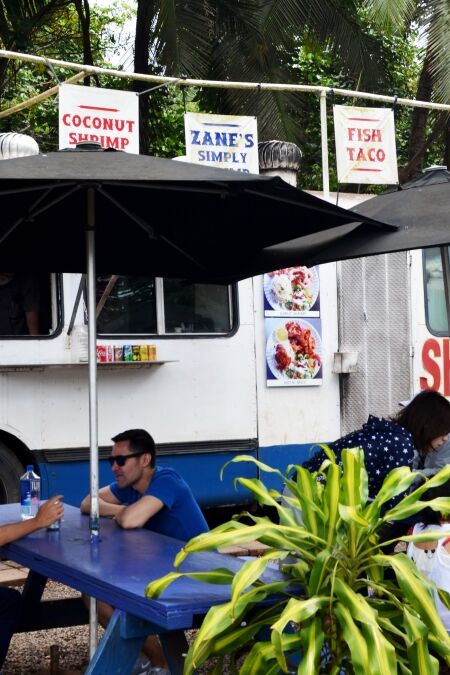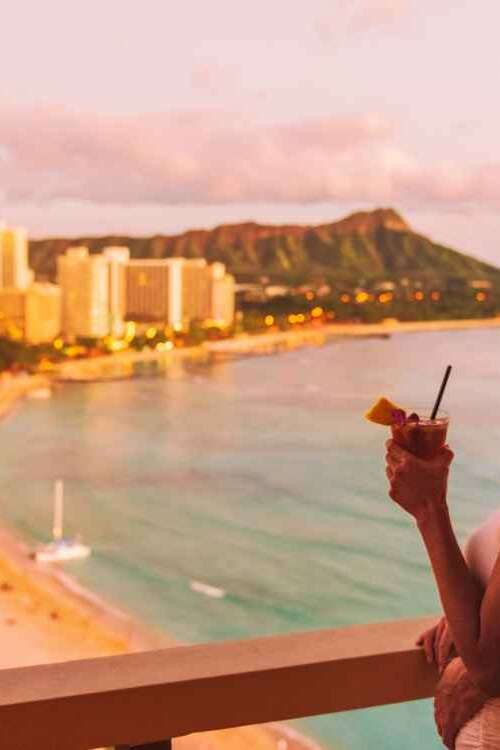Mookini Heiau, located on the Big Island of Hawaii, is one of the oldest and most revered historical sites in the state, standing as a testament to the island’s rich cultural heritage. This sacred temple, dating back over 1,500 years, played a crucial role in ancient Hawaiian religious practices and continues to hold deep significance today. In this guide, we’ll explore Mookini Heiau’s historical background, its cultural importance, practical tips for visiting, and nearby attractions that offer a deeper understanding of Hawaii’s storied past.
Highlights
- Feel the powerful mana (spiritual energy) that still resonates at this sacred site, making it a profound experience for those seeking a connection with Hawaii’s spiritual heritage.
- The serene and isolated location provides a peaceful setting for reflection and appreciation of nature’s beauty.
- The nearby birthplace of King Kamehameha I is just a short walk from the heiau. You can easily combine these two historic sites.
- Unlike more popular tourist sites, Mookini Heiau is relatively quiet and uncrowded, allowing visitors to explore at their own pace without the distractions of large crowds.
History

Historical Background
Mookini Heiau, located on the northern tip of Hawaiʻi Island, is one of the oldest and most sacred sites in the Hawaiian Islands, dating back to around 480 AD. Dedicated to the god Ku, this ancient temple played a significant role in Hawaiian religious practices, particularly those related to war, agriculture, and fertility.
Origins and Construction
The first iteration of Mookini Heiau is believed to have been constructed by the high priest Moʻokini, marking the site as an important spiritual center from its inception. The temple’s location on the island’s northernmost point adds to its historic and cultural significance.
Expansion by Paʻao
Legend has it that the priest Paʻao, who introduced the practice of human sacrifice and the kapu (taboo) system to Hawaii, later expanded or rebuilt Mookini Heiau. His influence transformed the site into a more fortified and imposing structure, solidifying its role in ancient Hawaiian society.
Religious Ceremonies
As a central place of worship, Mookini Heiau was where ancient Hawaiians conducted religious ceremonies, made offerings and sought the gods’ favor. The site was integral to the community’s spiritual life, hosting rituals that were believed to ensure prosperity and protection.
Human Sacrifice Practices
Mookini Heiau was a luakini heiau, a type of temple specifically associated with war, where human sacrifices were performed to appease the gods. These sacrifices were considered essential for the success and survival of the community, reflecting the temple’s grim yet vital role in Hawaiian warfare and religion.
Role in the Kapu System
The heiau was deeply entwined with the kapu system, a strict code of conduct that governed every aspect of ancient Hawaiian life. The rules and prohibitions enforced at Mookini Heiau influenced social order, religious practices, and the daily lives of the Hawaiian people.
Contemporary Importance
Today, Mookini Heiau remains a sacred site for Native Hawaiians, serving as a living spiritual temple. It offers a space for reflection, prayer, and cultural connection, allowing visitors to engage with Hawaii’s rich history and spiritual heritage.
What to Expect

Visiting Mookini Heiau offers a profound and contemplative experience, set amidst the rugged beauty of North Kohala. As you approach the ancient stone walls, the serene atmosphere envelops you, with the vast ocean on one side and sweeping landscapes on the other. The heiau’s remote location adds to its mystique, providing a powerful sense of connection to Hawaii’s past. Visitors are encouraged to walk quietly and respectfully, refraining from disturbing the site, as it remains a sacred place of worship for Native Hawaiians.
Tips for Visiting Mookini Heiau
- Respect the Sacredness: Walk quietly and refrain from touching or moving any stones; this site is still considered sacred.
- Dress Appropriately: Wear comfortable clothing and sturdy shoes suitable for the uneven terrain.
- Visit During Daylight Hours: The heiau is best experienced during the day to fully appreciate its historical significance and natural surroundings.
- Stay on Marked Paths: Stick to designated paths to protect both the site and the surrounding environment.
- Bring Water and Snacks: The remote location means no nearby facilities, so come prepared with water and light snacks.
- Check Weather Conditions: North Kohala’s weather can change quickly; be prepared for sun, rain, or wind.
Nearby Attractions and Activities

Discover King Kamehameha’s Birthplace Nearby
Just a short distance from Mookini Heiau, visit the birthplace of King Kamehameha I, the great Hawaiian king who unified the islands. Explore the grounds and imagine the early years of this legendary figure, who was born into royalty amidst the spiritual aura of this area.
Hike to the Scenic Pololu Valley Lookout
After immersing yourself in history, take a scenic drive to the Pololu Valley Lookout for a breathtaking view of Hawaii’s natural beauty. Hike down to the black sand beach below, or simply enjoy the panoramic vistas of lush cliffs and the vast Pacific Ocean.
Explore the Ancient Village at Lapakahi State Historical Park
Combine your visit to Mookini Heiau with a trip to Lapakahi State Historical Park, where you can explore a partially restored ancient Hawaiian fishing village. Wander through the remnants of traditional thatched houses and gain insight into the daily lives of early Hawaiians.
Take a Guided Cultural Tour for Deeper Insight
Enhance your experience by joining a guided cultural tour of Mookini Heiau and the surrounding sites. Local experts will provide fascinating stories and deeper context about the temple’s history, significance, and traditions that continue to resonate throughout Hawaii.
Best Times to Visit

The best times to visit Mookini Heiau are in the early morning or late afternoon when the light is soft, and the site is less crowded, allowing for a more peaceful and reflective experience. These times also offer cooler temperatures, making it more comfortable to explore the area. Additionally, visiting during these quieter hours enhances the spiritual atmosphere, giving you a deeper connection to the site’s ancient history and cultural significance.
Frequently Asked Questions (FAQs)
Mookini Heiau is located near Upolu Point on the northern tip of the Big Island of Hawaii, within the Kohala Historical Sites State Monument.
Yes, Mookini Heiau is open to the public, but visitors are asked to respect its sacredness and refrain from disturbing the site.
Mookini Heiau is one of the oldest and most sacred sites in Hawaii, used historically for religious ceremonies and offerings.
Mookini Heiau is estimated to be over 1,500 years old, making it one of the oldest structures in Hawaii.
No, there is no entrance fee to visit Mookini Heiau, but donations to help preserve the site are welcome.
Visitors should be aware that Mookini Heiau is a sacred site, and it is important to show respect by not disturbing the stones or the surrounding area.
How to Get There
By Car
To reach Mookini Heiau by car, start from Kailua-Kona. Head north on Highway 19 for approximately 30 miles. As you approach Kapaau, look for the signs directing you to the Heiau. Turn onto Mookini Heiau Road, and follow it until you reach the parking area. The drive offers scenic views of the coastline and lush landscapes, making your journey even more enjoyable.
By Bus
If you prefer public transportation, consider taking the Hele-On bus service. Check the latest schedule for routes that head toward the North Kohala region. You’ll need to board the bus at designated stops in Kailua-Kona and hop on the route that services Kapaau. Once you arrive in Kapaau, it’s a short walk to Mookini Heiau, allowing you to soak in the local sights along the way.
Step Back in Time, Walk with Respect
Mookini Heiau stands as a timeless sentinel of Hawaiian history, its ancient stones echoing the deep spiritual and cultural roots of the islands. As you explore this sacred ground, you’re not just visiting a historical site—you’re walking through a living piece of Hawaii’s heritage. We encourage all who visit to do so with reverence, honoring the traditions and significance that make Mookini Heiau such a powerful place. For those eager to dive deeper, consider joining a guided tour or exploring additional resources to fully appreciate the profound legacy of this extraordinary temple.




